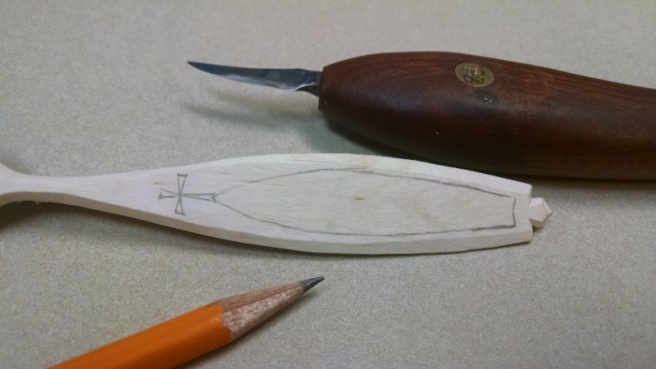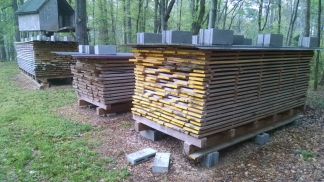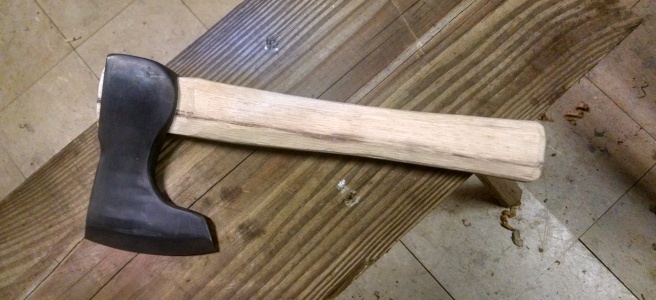One of the reasons I was most looking forward to Greenwood Fest was for the opportunity to look over Dave Fisher’s shoulder as he did some letter-carving. Dave is a maestro at this work (for example, here, here and here). He has even done a blog post specifically about lettering. But a blog just didn’t quite give me the confidence to try it – I wanted to see it in action.
To be honest, I have tried letter-carving in the past, but I was never particularly happy with the results. In fact, I actually carved my initials into the very first spoon I ever carved, six years ago in 2010. I had no sloyd or spoon knives at that point. I carved the whole thing with a gouge and a drawknife, and then I carved the letters with a chisel. The spoon is quite good – I still use it every week:

And the letters are neat enough, but also pretty bland and lifeless. Not something I really want to showcase on all of my spoons:

I didn’t try to carve letters again for three more years. When my first son was born in 2013, he spent nine days in the NICU. There wasn’t much that I could do for him, but could carve a spoon for him. I decided to try carving letters again. By this point, I had proper spoon-carving knifes, so I attempted to do the letters with the tip of my sloyd knife. The sentiment was laudable, but the execution was not. It’s the thought that counts?

Anyway, after that I was pretty much ruined on letter-carving until I had some proper instruction. After quizzing Dave about his tools, techniques, and unspoken wisdom, I was ready to give it another go. The biggest takeaway? A knife with a short blade and a rather tight radius near the tip seems to be mission-critical. He uses the tip of a pen knife. I had this little guy which seems to be close to the proper geometry:

After sketching a simple design that I liked, I did my best to follow the lines, being careful not to cut too deeply (but also not being too timid either. No need to go over the same cut five times to get to the proper depth). Long, flowing lines like this were actually pretty easy to execute. It’s the stopping and starting that makes it tough!


I was pretty pleased with how Elam’s new spoon turned out, but the cursive lettering was tricky. I highly recommend starting with all-caps font. Straight lines are a lot more fun than tight curves. It might be impolite when sending emails to your co-workers, but it’s perfectly acceptable to shout on a spoon.

I was on a roll, so I decided to keep going. I carved a quick spoon while I was at Greenwood Fest and ate with it all week. Peter Follansbee made it “famous” on his first blog post after the event (sixth picture from the top). In honor of its provenance, I decided to give the spoon an appropriate name:

So now I have a new skill that I’m not altogether embarrassed about. Score one for the home team, and Tip o’ the Hat to you, Dave Fisher.








































































